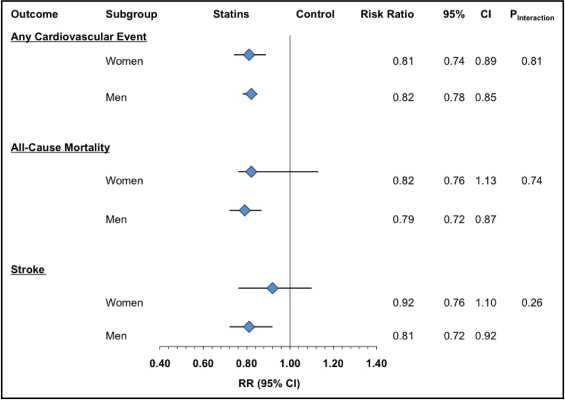Gutierrez et al, in an analysis of 11 trials with 43,193 patients, concluded that statin therapy has no benefit on stroke and all-cause mortality in women. The investigators found statistically significant 21% and 18% reductions in mortality and stroke with statins for men but only 19% and 8% reductions in women, which did not reach statistical significance. However, before we dismiss statin therapy in women, a few factors must be considered. The event rate in the statin group for all-cause mortality was lower in women compared to men (7.9% vs 9.9%). In addition, the sample size for men was almost threefold larger for all-cause mortality (14,654 vs 4,405) and twofold larger for stroke (19,488 vs 8,258) compared to women. The failure to reach statistical significance is likely attributable to the reduced power for the subgroup of women. Moreover, the interpretation based on p values and statistical significance is problematic when comparing estimates from subgroups. A more appropriate method is to use a test for interaction to evaluate whether the magnitude and/or direction of the effect size differ on the basis of gender. Our results show that the test for interaction was not significant for all the reported outcomes, suggesting that statins are as beneficial in women as in men ( Figure 1 ).





